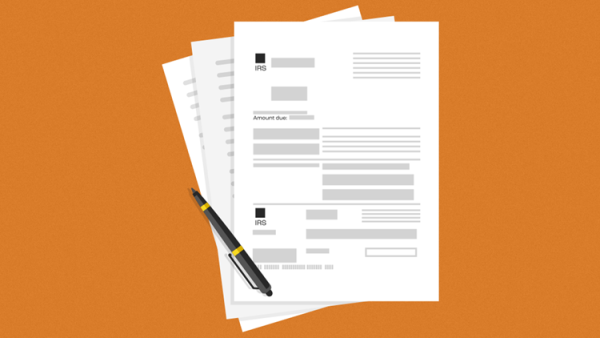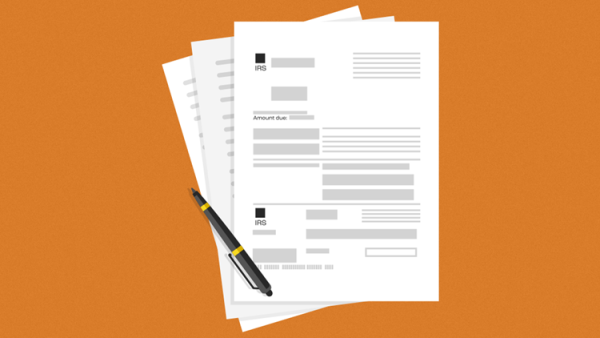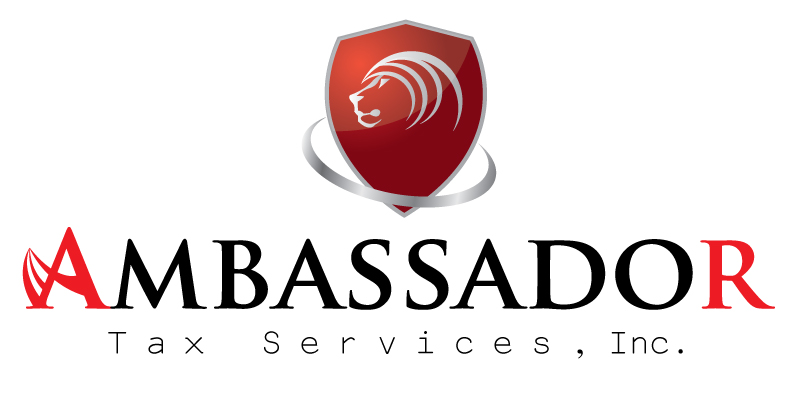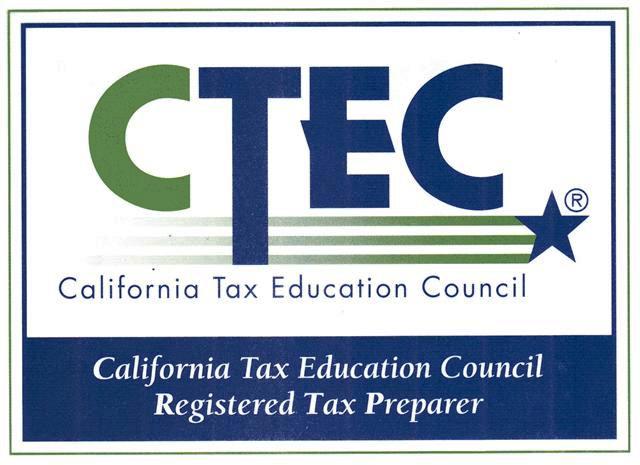
by Taxing Subjects | Sep 27, 2023 | Tax Tips and News
Filing deadlines often change for taxpayers in regions that experience natural disasters. When these extreme weather events hit, the IRS frequently provides tax due date extensions. The relaxed due dates are intended to give more time to the individuals and business impacted by the natural disaster to prioritize relief and recovery instead of drawing their focus to a filing deadline. Following are notices for the upcoming tax season. We encourage you to visit the Tax Relief in Disaster Situations page on the IRS website for the very latest updates.
Hurricane Idalia
The IRS has announced tax relief packages for regions in the states of Florida, Georgia, and South Carolina to help those affected concentrate on rebuilding after the storm. Tax payments are now pushed back until February 15th, 2024.
IRS information on Hurricane Idalia
Hurricane Lee
The Federal Emergency Management Agency issued a disaster declaration for all counties in Massachusetts and Maine. These states are eligible for tax relief and their tax dates are now rescheduled to February 15th.
More IRS Information on Hurricane Lee
The Hawaii Wildfires
Parts of Hawaii have been granted an individual and business return filing extension until February 15th, 2024 to help the victims focus on disaster recovery.
IRS information on Hawaiian Wildfires
– Article provided by Taxing Subjects.

by Taxing Subjects | Sep 23, 2023 | Tax Tips and News
As of last week, the Internal Revenue Service (IRS) has taken decisive action to address concerns regarding the improper filing of Employee Retention Credit (ERC) claims, announcing a moratorium on new claims through at least the end of the year. This decision is aimed at protecting unsuspecting tax businesses from falling prey to scams that are orchestrated by aggressive promoters of the credit; these egregious marketers have been targeting ineligible applicants, who risk paying the credit back on top of interest and penalties.
What is the ERC?
The ERC is a legitimate pandemic-era tax credit designed to support businesses that continued to pay employees during the COVID-19 pandemic while facing operational suspensions or significant declines in gross receipts. The program is not available to individuals.
To be eligible for the ERC, employers must meet extremely specific requirements, including sustaining a suspension of operations due to government orders, experiencing significant declines in gross receipts, or qualifying as a recovery start-up business during specified periods.
The Employee Retention Credit is notoriously complex, and its esoteric qualifications affect multiple government agencies; with this high level of intricacy, and now the potential risk of being scammed, many legitimate businesses are now hesitant to claim the credit, or potentially even try.
How are businesses being scammed?
The moratorium, ordered by IRS Commissioner Danny Werfel, comes in response to increasing evidence of ineligible and potentially fraudulent claims entering the system. The IRS had previously intensified its focus on reviewing ERC claims for compliance concerns, including escalating audit efforts and criminal investigations into promoters that filed suspicious claims.
However, as of July 31, 2023, the IRS-CI initiated 252 investigations involving over $2.8 billion of potentially fraudulent ERC claims, resulting in federal charges for fifteen of these cases. Six matters have led to convictions, with an average sentence of 21 months. These efforts are part of the IRS’s broader strategy to address COVID-related fraud, totaling over $8 billion in suspected pandemic fraud.
To avoid fraudulent efforts in relation to the ERC, businesses should remain cautious about aggressive marketing tactics that promote risk-free ERC submissions. The IRS has identified several warning signs, such as unsolicited calls or advertisements offering an “easy application process” and promoters claiming they can quickly determine eligibility. Furthermore, large fees up-front and fees based on a percentage of the ERC refund are also red flags.
For businesses, there are significant risks associated with improper claims, including the potential repayment of credits along with penalties and interest. To protect against questionable claims and potential scams, businesses should collaborate with trusted tax professionals who understand the complex rules associated with the ERC. Additionally, the IRS has released tools to help determine ERC eligibility, including an FAQ page and a question-and-answer guide. If a business suspects a scamming attempt, Form 14242 can be used to report suspicious or abusive tax promotions.
What should businesses know about the moratorium?
For those who have already filed to claim the credit, payouts for legitimate ERC claims will continue during the moratorium period at a slower pace. The processing time for existing ERC claims will extend from the standard 90 days to 180 days or more, depending on the level of compliance review required. The IRS may also request additional documentation from taxpayers to verify the legitimacy of their claims.
Our Chief Revenue Officer at Drake, John Sapp, CPA, puts it this way: “IRS is slowing down the ERC payment process to circumvent fraud. Similar to when police setup a random ‘license checkpoint’ – it slows down traffic but may keep unlawful drivers from getting on the road.”
Additionally, the IRS is developing new initiatives to assist businesses victimized by these aggressive scammers, including a settlement program for reimbursement of improper ERC payments. Likewise, a specialized option to withdraw claims will be made available for those who have filed unprocessed ERC claims. Ideally, this functionality will help businesses avoid repayment issues and the payment of contingency fees to promoters. However, it’s important to note that individuals who have filed fraudulent claims may still face criminal investigation and prosecution if they choose to withdraw.
In its broader compliance efforts, the IRS is collaborating with the Department of Justice to combat ERC fraud and take action against marketers disregarding the program’s rules. Auditors with specialized training are examining ERC claims with the highest risk of noncompliance, while the IRS Criminal Investigation division actively identifies promoters of fraudulent claims for potential referral to the Department of Justice.
Overall, the IRS has recently taken measures to address concerns regarding improper ERC claims and protect businesses from fraudulent schemes. The IRS efforts through the moratorium on new claims, enhanced compliance reviews, and collaboration with the Department of Justice seek to uphold the ERC program and prevent abuse, ideally empowering eligible and legitimate businesses to claim the credit without fear of being exploited or reaping financial repercussions. As a tax professional, you can advise and guide your clients to exercise caution when dealing with belligerent promoters and take necessary next steps if they are implicated in fraudulent activity.
Sources:
Red flags for Employee Retention Credit claims; IRS reminds businesses to watch out for warning signs of aggressive promotion that can mislead people into making improper ERC claims
Employee Retention Credit Eligibility Checklist: Help understanding this complex credit
– Article provided by Taxing Subjects.

by Taxing Subjects | Sep 16, 2023 | Tax Tips and News
The Internal Revenue Service says it’s about to move its main audit spotlight from the everyday working-class individual taxpayer to those engaged in high-income activities. Now on the audit radar: high-income earners, partnerships and large corporations, and promoters pushing schemes that abuse the tax laws.
This turn of focus comes after a comprehensive review of IRS enforcement efforts funded by the Inflation Reduction Act. All changes are meant, the IRS says, to help restore fairness in the American income tax system.
So Why Do This Now?
The audit rates for the wealthy, partnerships and other high earners have dropped sharply over the last 10 years. New technology, such as Artificial Intelligence, can now be used to crack complex financial arrangements in record time — an effort that used to take human enforcement agents months.
The upgrade in technology will help the IRS spot emerging compliance threats and schemes early on, while also improving decision-making for audit selection of taxpayers so that “no change” filers are not unduly burdened.
Called the High Wealth, High Balance Due Taxpayer Field Initiative, the new IRS effort focuses on taxpayers with total positive incomes above $1 million and more than $250,000 in tax debt.
The agency has had some measure of success recently with high-income tax cases, collecting some $38 million from more than 175 high-income earners. The IRS says that effort will be expanded with the new initiative, contacting about 1,600 taxpayers and hopefully collecting hundreds of millions of dollars in taxes owed.
Turning Scrutiny Toward Large Partnerships.
As of 2021, the IRS already had a Large Partnership Compliance (LPC) program, but the IRS intends to expand it, increasing the number of partnerships examined to take in some of the biggest and most complex partnership returns the agency receives. This, the agency says, is where AI can help, speeding up the screening process of complex returns and flagging those returns that need closer examination.
This part of the upgrade plan could become reality very soon, with examinations planned for 75 of the largest partnerships in the country. These companies have an average of $10 billion in assets each, and include hedge funds, real estate investment partnerships, publicly traded partnerships, large law firms, and others.
Other Work slated for 2024 includes:
- Expanded scrutiny of digital assets. A review of the IRS Virtual Currency Compliance Campaign showed as many as 75% of taxpayers with digital assets could be non-compliant on their income tax returns, according to records from digital currency exchanges.
- Examination of high-income taxpayers for FBAR violations. A Report of Foreign Bank and Financial Accounts (FBAR) is required when a U.S. citizen has an interest in a foreign financial account holding more than $10,000 in value. The IRS took a look at filing patterns and found hundreds of possible FBAR non-filers with average account balances of over $1.4 million.
- Investigating shell companies posing as labor brokers. Tax investigators say they’ve found instances where construction contractors are making 1099-MISC or 1099-NEC payments to what appears to be a subcontractor – but it’s a “shell” company with no employees, no equipment, and no business links to the contractor. The money paid, ostensibly for labor services, instead flows back to the contractor’s pocket.
As part of the overall effort, the IRS is also working to help individual filers who are not considered “high-income.” The audit rates for taxpayers making less than $400,000 a year are being held steady. Fairness safeguards are also being added for individual taxpayers claiming the Earned Income Tax Credit, or EITC.
Taxpayers claiming the EITC were historically audited more often than those at the upper end of the income scale. In fact, audit rates for high-income-level filers, corporations and partnerships dropped sharply in recent years while the much-less well-off taxpayers saw higher audit rates.
Source: IRS announces sweeping effort to restore fairness to tax system with Inflation Reduction Act funding; new compliance efforts focused on increasing scrutiny on high-income, partnerships, corporations and promoters abusing tax rules on the books
– Article provided by Taxing Subjects.

by Taxing Subjects | Sep 9, 2023 | Tax Tips and News
By Matt Jagst, Drake Software Head of Product
For many tax and accounting firms, methods of client interaction changed dramatically in the spring of 2020. Firms accustomed to having their clients visit the office to serve them face-to-face had to switch to a completely contactless and often remote working environment. This shift has become permanent in many ways, and the results from a recent survey conducted by Drake Software shed some light on the current perspectives of tax professionals on best practices for contactless tax prep. Many firms say they would never want to go back, at least fully, to their past service models (30% of survey respondents said they prepared almost all of their returns with no in-office contact with taxpayers). Technology solutions exist to help support firms that operate in a remote environment and this post will talk about some of the key technologies, processes and trends in this space.
Historically, tax preparers encouraged their clients to come into a physical office, sit down with them and communicate face-to-face. There were many benefits to this; connection with their clients, ability for the client to communicate any changes in their situation, Q&A sessions, and perhaps most importantly, the opportunity for the professional to determine if there was any add-on service that the client might need down the road such as tax planning, small business creation, etc. Of course, there were challenges to this model, especially during the busiest times of the year when a client might want to chat about a non-time sensitive question while the tax professional was trying to crush as many returns as possible in a short window of time.
Fast forward to today — many tax professionals have grown accustomed to working remotely and no longer prefer to open the office for face-to-face meetings. Additionally, many clients are not interested in taking the time to travel to an office (27% of clients prefer virtual but are open to in-person and 10% insist on virtual) when they have grown accustomed to managing their daily tasks online. Of course, there will always be a segment of your client base that will want to meet in person (7% of clients insist on in-person appointments and 56% prefer in-person but are open to virtual) and nearly all firms still support that, but adopting a hybrid approach of serving clients at their convenience is a winning strategy.
Communication and client collaboration are key to ensuring that a contactless tax preparation service will be successful. Efficient tax preparation during busy seasons is reliant on receiving information and documents from clients on time and firms today understand that online document exchange must be extremely simple to use and safe and secure. While many firms have adopted a secure online portal to exchange documents for clients who choose not to visit the office (46%), we still see email (29%), in-person drop off/pick up (15%), and mail (10%) as common methods for document delivery. If your firm has not fully adopted a secure online portal and document exchange solution, this is one area to explore today. Additionally, an e-signature solution is a must-have if you’re going to deliver returns remotely. Surprisingly, our survey found that only 59% of respondents are collecting e-signatures remotely.
In summary, the profession and client base are not likely to return to the face-to-face model that existed prior to 2020. Clients are demanding that their tax professionals support them as comprehensively as they’ve done in the past, but they now want it to be done remotely using technology that they’ve grown accustomed to. Like many things in our profession, there is not a one size fits all approach and, in this area, we recommend that firms prepare themselves and their firms to serve the client in the best method for them as an individual.
Our survey found that most tax professionals have a positive viewpoint about their ability to transition service methods (89% of respondents believe they can offer the same, or very close to the same, level of service for both in-person and contactless clients). There are many great tools out there that support a contactless tax prep service and the team at Drake Software would love to discuss tools such as Drake Tax, Drake Portals, E-Sign and others that enable your firm to fully embrace a contactless tax business.
– Article provided by Taxing Subjects.

by Taxing Subjects | Sep 8, 2023 | Tax Tips and News
The push toward an all-electronic filing future continues at the IRS. The agency’s latest move has Form 8300, Report of Cash Payments Over $10,000, e-filed starting in 2024, in an effort to avoid backlogs that the old paper forms presented while speeding up processing times.
The shift is included in final regulations amending e-filing rules for information returns.
A Big Move Against Crime.
Any business that receives cash payments of more than $10,000 must report those payments to the federal government. While many of these transactions are legitimate, the information in Forms 8300 can help alert law enforcement to illegal financial activity by drug cartels, those who finance terrorists, or those who seek to evade taxes.
The new rule for Form 8300 fits in with current rules mandating businesses to electronically file other information returns – such as Forms 1099 and Forms W-2.
The Jan. 1, 2024, shift to electronic filing does have exemptions. E-filing is mandated if a business is required to file 10 information returns or more, other than Form 8300. For example, if a business files just five forms 1099-INT, and five Forms W-2, then the business has to e-file all its information returns, including any Forms 8300.
Conversely, however, any business not otherwise required to electronically file their information returns can still e-file if they wish.
Waivers or Exemptions are Available.
In cases where electronic filing information returns would create a hardship, business filers can seek a waiver from the IRS, using Form 8508, Application for a Waiver from Electronic Filing of Information Returns, available on the IRS.gov website. If the application is granted, the waiver applies to all Forms 8300 for the entire calendar year, but the filer should include the word “Waiver” on the top center of Page 1 on each Form 8300 when they submit a paper return.
Sometimes, the technology that’s needed to e-file may conflict with the filer’s religious beliefs. In that case, the IRS says the filer can paper-file their Form 8300 — as long as the words “RELIGIOUS EXEMPTION” are included on top-center of Page 1.
For the Best Experience, File Electronically.
Forms 8300 have to be filed no later than 15 days after a qualifying transaction. Filing electronically helps businesses make that deadline; they can even batch-file their reports, which is handy for those who have a lot of forms to upload. If a business has to file a late Form 8300, it should be labeled as such and filed in the same manner as a timely filed return. Late forms must carry the identifier “LATE” on the top center of Page 1, whether paper-filed or e-filed. When electronically filing, a free email acknowledgement of receipt will be sent to the filer. This receipt does not count as an official record.
In order to e-file Forms 8300, a business has to first create an account with the Financial Crimes Enforcement Network and its BSA E-Filing System.
Helpful resources for more information are easy to find. The Bank Secrecy Act E-Filing Help Desk can be reached either by phone (866-346-9478) or by email ([email protected]).
Check out E-file Form 8300: Reporting of large cash transactions for details on the reporting requirements, or the IRS’ video, How to Complete Form 8300 Part 1 and Part 2 for common mistakes and how to avoid them.
For more key information about details such as recordkeeping and Forms 8300, check out our source on the IRS website: Businesses must electronically file Form 8300, Report of Cash Payments Over $10,000, beginning Jan. 1, 2024
– Article provided by Taxing Subjects.









